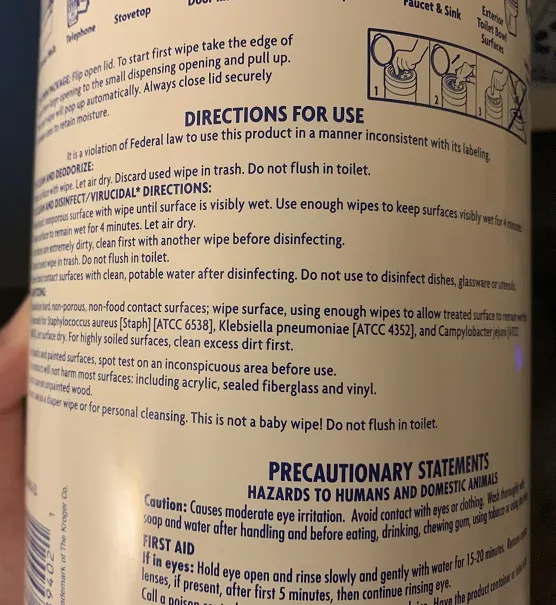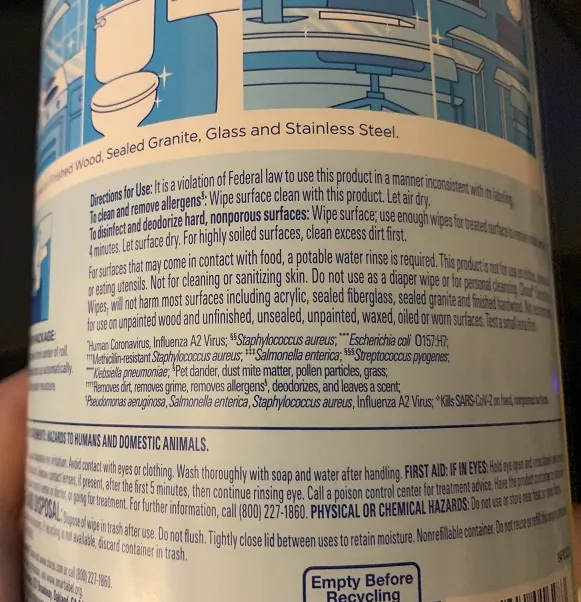It's not often I actually compare the difference between two cleaning products. Recently, I decided to read the labels of a Kroger brand cleaning wipe and compared that to the Clorox one. As expected, each brand lists the common pathogens they work against.
Here is the Kroger label.

And here is the Clorox label.

It shouldn't come as surprise that the Clorox wipes seem to have a greater repertoire. Kroger is often seem as the more generic brand. It's like a step above Walmart's Great Value series.
I found it somewhat interesting that Kroger's doesn't list E. coli on theirs. For whatever reason, it doesn't have Salmonella either. Instead, it's got Campylobacter, which is a legitimate food pathogen. The ATCC number you see refers to the strain of the bacteria. This is a nomenclature by ATCC, which describe the strains' properties.
On the other hand, Clorox makes a point to distinguish between MRSA and normal S. aureus. I would think antibiotic resistance has little to do with how well chemical agents kill them. The label also mentions Pseudomonas, which is more of an opportunistic pathogen. Okay, it's not an uncommon nosocomial infection. The hospitals and labs tend to use more potent cleaning agents to deal with them than Clorox wipes.
Of course, one cannot ignore the PR by Clorox by listing Covid as one of the things their wipes are good against. I'm sure anything that can affect Influenza virus can affect almost every other virus.
But hey, bonus scent!
At the end of the day, the key to use these wipes is to make sure the surface is wet with cleaning agent and let it airdry. I'm willing to bet most people either don't keep the surface wet with the cleaning agent or wipe it off too early. When that happens, you aren't actually allowing the germs to succumb to the cleaner. I guess you could file this under user error.
The same protocol applies to cleaning agents used in hospitals and labs. You let things soak and airdry. Every now and then, there are cultures set up to check if anything is growing on work surfaces.
How would you know if your product or technique is working? Well, if you could obtain some agar plates, you could always try to experiment yourself. Take a swab and swipe the surface before cleaning. Inoculate that on the agar. Then, after disinfection, you could take another swab and do the same. Growth will determine the efficacy of your choices.
Some things to think about.
